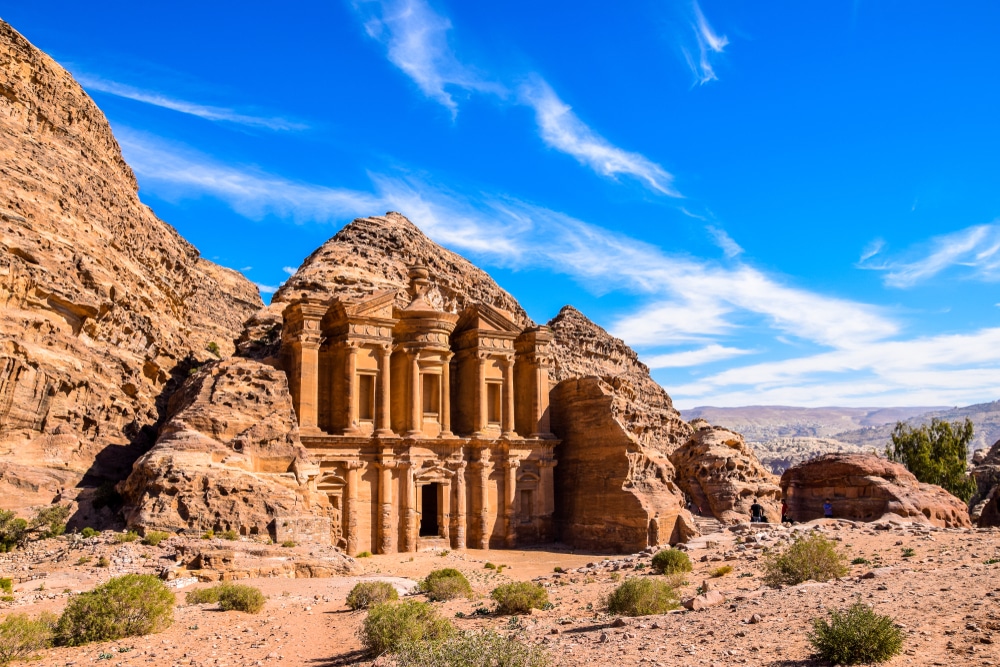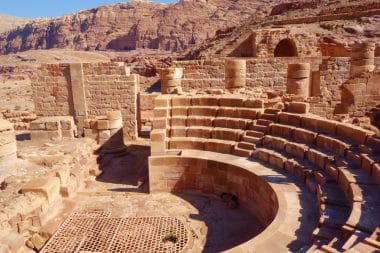
Petra is an ancient city in Jordan known for its unique rock formations and ancient ruins. This historic city has been a UNESCO World Heritage Site since 1985 and was declared one of the New Seven Wonders of the World in 2007. Petra is a popular destination for tourists from all over the world and offers a fascinating journey into the past.
The peculiarities of Petra
Petra is a city rich in history and culture. The city was founded by the Nabataeans, an Arab tribe, and was an important trading city in ancient times. Petra was later conquered and occupied by the Romans and Byzantines. The heritage of these different civilizations can be seen in the city’s ancient ruins and buildings.
One of the biggest features of Petra is the rock formations, into which many buildings were built directly. The buildings are carved into the stone and have been lavishly decorated. The temples, tombs and amphitheatre are particularly impressive. The most famous attraction in Petra is the “Treasury”, which once served as a burial place and is now considered a symbol of Petra.
Another special feature of Petra is the many hiking trails that lead through the rocky landscape. Some of the trails lead to hidden gems and places that are not as well known as the main sights. Travelers should definitely take the time to explore the lesser-known trails and enjoy the stunning scenery.
Sights in Petra
Petra offers a variety of sights to visit. The most famous attraction is the “Treasury”, which once served as a burial place and is now considered a symbol of Petra. The Treasury is an example of the unique architecture and craftsmanship that can be found in Petra.
Another well-known building is the amphitheater, which is located at the end of the Siq, a narrow passage in the rock formations. The amphitheater was built into the rock and can accommodate 3,000 spectators. Theatre performances and other events were held here in ancient times.
The “Tombs of the Kings” are another famous attraction in Petra. The Royal Tombs are a series of imposing tombs built into the rocks. They were built by the Nabataeans and were later expanded and restored by the Romans and Byzantines.
For the more adventurous, there is also the possibility of climbing the mountain “Al-Khubtha”. From here you have an incredible view of the rocky landscape of
Petra and can enjoy the feeling of freedom and grandeur. However, this hike requires a certain physical fitness and experience in mountaineering.
Petra offers some impressive highlights, including the “Royal Tomb”, which was carved into the rock and is considered one of the most beautiful structures in Petra. It consists of several levels and an impressive façade with columns and reliefs, and fascinates visitors from all over the world with its architectural masterpiece of the Nabataeans. The tomb was restored in the 1990s and is now open to the public.

In addition to the Royal Tomb, there are many other sights to discover in Petra, such as the “Roman Theatre”, which was restored in the 1960s and is now a popular venue for concerts and other events. The theater seats about 3,000 spectators and is an impressive example of Roman architecture in Petra.
Another interesting structure in Petra is the “Qasr al-Bint” temple from the Nabataean period, which was built in the 1st century AD and is dedicated to the gods of the Nabataeans. The temple was restored in the 1950s and is one of the oldest buildings in Petra.
The “Monastery” rock formation is another fascinating sight that can be found at the top of a mountain and can be reached after climbing a staircase of about 800 steps. The monastery is an impressive example of Nabataean architecture and offers a breathtaking view over the rocky landscape of Petra.
The “Museum of Petra” offers a wealth of information about the history and culture of the Nabataeans and is another place to visit. Here you can see artifacts and exhibits from the Nabataean period and learn more about the history of Petra.
Overall, Petra is a fascinating place with a rich history and stunning sights that deserves time and energy to be explored and enjoyed. Whether you choose a guided tour or wander alone through the rocky landscape, Petra will surely provide an unforgettable experience.
Facts about Petra
- Petra was named a UNESCO World Heritage Site in 1985 and is one of the “New Seven Wonders of the World”.
- Petra is located in the south of Jordan and is surrounded by mountains and deserts.
- The city was carved into a red rock and can be accessed from a gorge called Siq.
- Considered the most recognizable landmark of Petra, the treasury was probably built in the 1st century BC and served as a tomb for a king or nobleman.
- Petra was an important trading center in ancient times and was located on the trade route between China and Europe.
- The Nabataeans were known for their ability to collect and store water, and Petra has a sophisticated water system with canals, cisterns, and reservoirs.
- Petra was an important city until the 6th century AD, but after that it was gradually abandoned and fell into oblivion until it was rediscovered by European explorers in the 19th century.
- Petra is now one of the most important tourist attractions in Jordan, attracting hundreds of thousands of visitors from all over the world every year.

